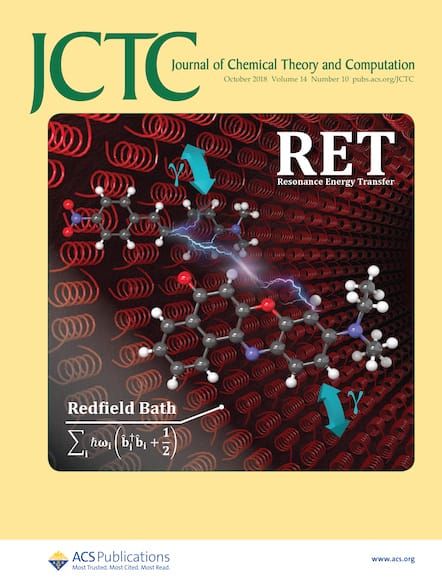A Hybrid Bottom-Up and Data-Driven Machine Learning Approach for Accurate Coarse-Graining of Large Molecular Complexes.
IF 5.5
1区 化学
Q2 CHEMISTRY, PHYSICAL
引用次数: 0
Abstract
Bottom-up coarse-graining refers to the development of low-resolution simulation models that are thermodynamically consistent with certain distributions from fully atomistic simulations. Force-matching and relative entropy minimization represent two major, frequently applied methods that allow to develop such bottom-up models. Nevertheless, atomistic simulations can often provide only limited sampling of the phase space. For bottom-up coarse-graining, these limitations may result in overfitting of the atomistic reference data, especially for large molecular complexes, where the learning may be agnostic of the actual affinities between binding partners. As a solution to this problem, we devise a data-driven machine learning hybrid coarse-graining concept that represents a regularized version of the relative entropy minimization approach. We demonstrate that this new approach allows one to develop coarse-grained models for molecular complexes that reproduce the targeted binding affinity but also describe the underlying complex structure accurately. The trained models therefore show diverse behavior as they can undergo frequent unbinding and binding events and are also transferable for simulating entire protein lattices, e.g., for a virus capsid.一种混合自底向上和数据驱动的机器学习方法用于大分子复合物的精确粗粒化。
自下而上的粗粒化是指低分辨率模拟模型的发展,这些模型在热力学上与全原子模拟的某些分布一致。力匹配和相对熵最小化是两种主要的、经常应用的方法,它们允许开发这种自下而上的模型。然而,原子模拟通常只能提供相空间的有限采样。对于自下而上的粗粒度,这些限制可能会导致原子参考数据的过拟合,特别是对于大分子复合物,其中学习可能不知道结合伙伴之间的实际亲和力。作为这个问题的解决方案,我们设计了一个数据驱动的机器学习混合粗粒度概念,它代表了相对熵最小化方法的正则化版本。我们证明,这种新方法允许人们开发粗粒度的分子复合物模型,再现目标结合亲和力,但也准确地描述了潜在的复杂结构。因此,经过训练的模型表现出不同的行为,因为它们可以经历频繁的解结合和结合事件,并且也可用于模拟整个蛋白质晶格,例如病毒衣壳。
本文章由计算机程序翻译,如有差异,请以英文原文为准。
求助全文
约1分钟内获得全文
求助全文
来源期刊

Journal of Chemical Theory and Computation
化学-物理:原子、分子和化学物理
CiteScore
9.90
自引率
16.40%
发文量
568
审稿时长
1 months
期刊介绍:
The Journal of Chemical Theory and Computation invites new and original contributions with the understanding that, if accepted, they will not be published elsewhere. Papers reporting new theories, methodology, and/or important applications in quantum electronic structure, molecular dynamics, and statistical mechanics are appropriate for submission to this Journal. Specific topics include advances in or applications of ab initio quantum mechanics, density functional theory, design and properties of new materials, surface science, Monte Carlo simulations, solvation models, QM/MM calculations, biomolecular structure prediction, and molecular dynamics in the broadest sense including gas-phase dynamics, ab initio dynamics, biomolecular dynamics, and protein folding. The Journal does not consider papers that are straightforward applications of known methods including DFT and molecular dynamics. The Journal favors submissions that include advances in theory or methodology with applications to compelling problems.
 求助内容:
求助内容: 应助结果提醒方式:
应助结果提醒方式:


